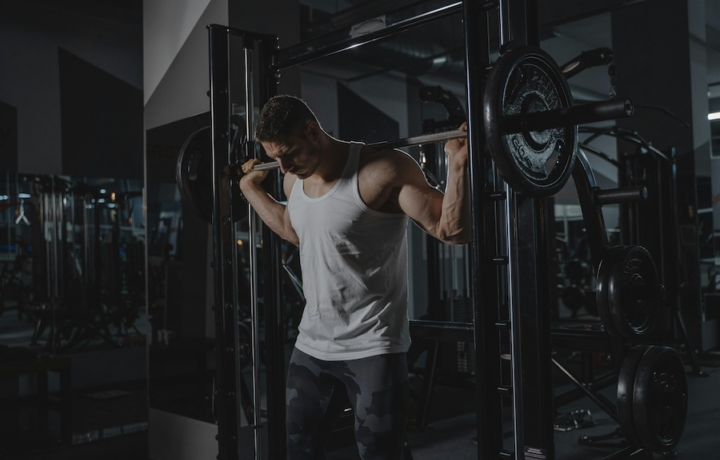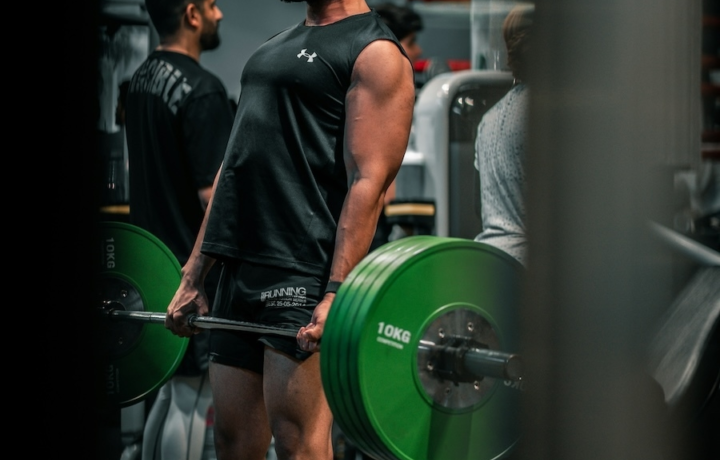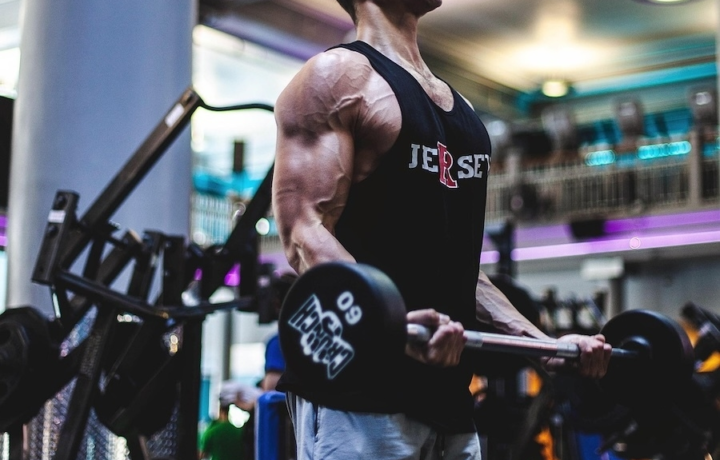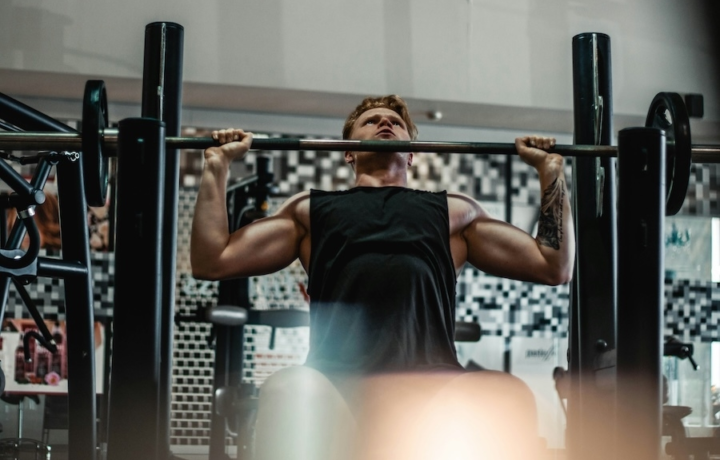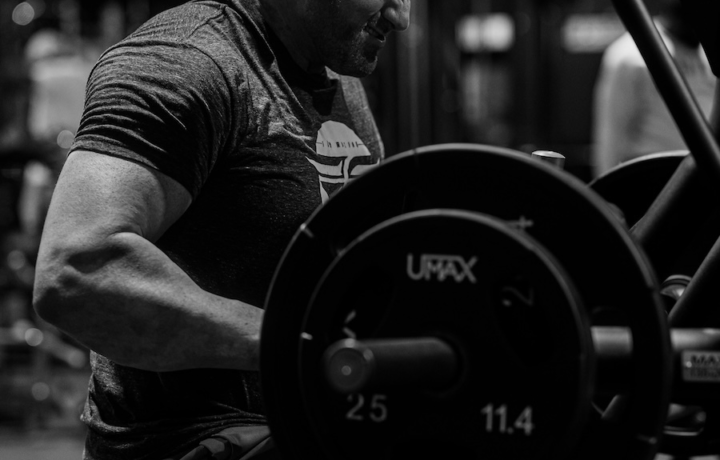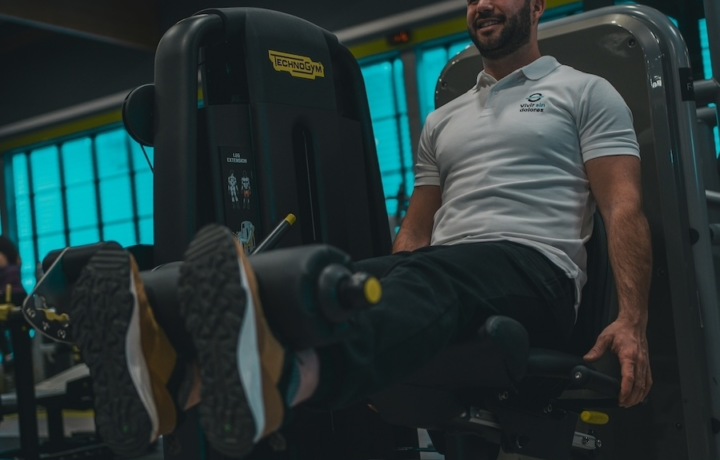Exercise
Bulgarian Split Squat

Bulgarian Split Squat
How to Perform
- Stand 2-3 feet in front of a bench or platform with your back to it, holding a dumbbell in each hand at your sides with a neutral grip.
- Extend your right leg behind you and place the top of your foot on the bench, keeping your front foot flat on the ground and pointing forward.
- Position your torso upright with shoulders back and chest up, engaging your core for stability throughout the movement.
- Take a deep breath in as you begin to lower your body by bending your left knee, keeping your weight centered over the heel and midfoot.
- Continue descending until your left thigh is parallel to the floor or slightly lower, while maintaining a vertical shin position and preventing your knee from extending beyond your toes.
- At the bottom position, keep your back straight, chest up, and rear knee pointing toward the floor with minimal distance from the ground.
- Exhale as you push through your front heel to drive back up to the starting position, fully extending your front leg without locking the knee.
- Complete all repetitions on one leg before switching to the other side, maintaining controlled movement throughout the entire exercise.
Important information
- Keep your front knee tracking in line with your toes throughout the movement to protect your knee joint.
- If you experience balance issues, try performing the exercise next to a wall or stable object for support until you develop more stability.
- Start with bodyweight only before progressing to dumbbells or other resistance to master proper form first.
- Adjust the distance between your front foot and the bench to find the position that allows for proper depth without compromising form.

Bulgarian Split Squat
Exercise Details
Primary Muscles
Muscle Groups
Mechanic
Risk Areas
Built for progress
Take the guesswork out of training
Create personalized AI-powered workout plans that evolve with you. Train smarter, track every rep and keep moving forward, one workout at a time.






The Bulgarian Split Squat stands as a powerful unilateral leg exercise that has earned its reputation in both strength and physique development circles. This intermediate movement primarily targets the glutes, quads, and hamstrings while engaging numerous stabilizing muscles throughout the lower body and core.
Originally popularized by Olympic weightlifters from Bulgaria, this exercise has transcended its origins to become a staple in bodybuilding and HIIT protocols alike. The beauty of the Bulgarian Split Squat lies in its ability to expose and correct muscular imbalances between your dominant and non-dominant legs—something that traditional bilateral exercises often mask.
When incorporated into a bodybuilding regimen, this movement excels at creating symmetrical development and detail across the lower body musculature. The isolation of each leg creates tremendous tension through a full range of motion, stimulating muscle growth while improving functional strength. For HIIT enthusiasts, the Bulgarian Split Squat delivers an intense cardiovascular challenge when performed with minimal rest, elevating heart rate and caloric expenditure.
From a strength perspective, this exercise offers significant carryover to athletic movements. By training each leg independently, you develop the stabilizing muscles critical for change of direction, acceleration, and power production. The balance component simultaneously enhances proprioception and neuromuscular coordination, which translates to improved performance in compound lifts like squats and deadlifts.
What makes the Bulgarian Split Squat particularly valuable is its accessibility—requiring minimal equipment while delivering maximum results. Whether your goal is hypertrophy, conditioning, or functional strength, this exercise delivers remarkable benefits with proper implementation. As you progress, you'll find this movement not only reshapes your lower body aesthetics but also contributes to improved movement patterns and athletic capacity in daily life and sports performance.
FAQ - Bulgarian Split Squat
The Bulgarian Split Squat primarily targets the quadriceps, glutes, and hamstrings while engaging hip adductors and core muscles as stabilizers. Your front leg does most of the work, making it excellent for addressing muscular imbalances between your dominant and non-dominant sides.
Stand about 2 feet in front of a bench with your back toward it, place one foot on the bench behind you, and position your front foot far enough forward that your knee stays behind your toes when you descend. Lower yourself by bending your front knee until your thigh approaches parallel to the floor, then drive through your front heel to return to the starting position.
The most common mistakes include leaning too far forward, allowing the front knee to cave inward or extend beyond the toes, positioning the front foot too close to the bench, and using momentum rather than controlled movement. Also, avoid elevating your rear foot too high, as this can place unnecessary stress on the hip flexors.
Beginners can start with bodyweight only and a lower bench or step, while holding onto a stable surface for balance. Intermediate lifters can add dumbbells or kettlebells held at your sides. Advanced athletes can progress to barbell variations, pulse reps at the bottom position, or elevate the front foot for increased range of motion.
For optimal results, incorporate Bulgarian Split Squats 1-2 times weekly with at least 48 hours between sessions to allow adequate recovery. They work well as a primary exercise on lower body days or as an accessory movement after compound lifts like squats or deadlifts.





